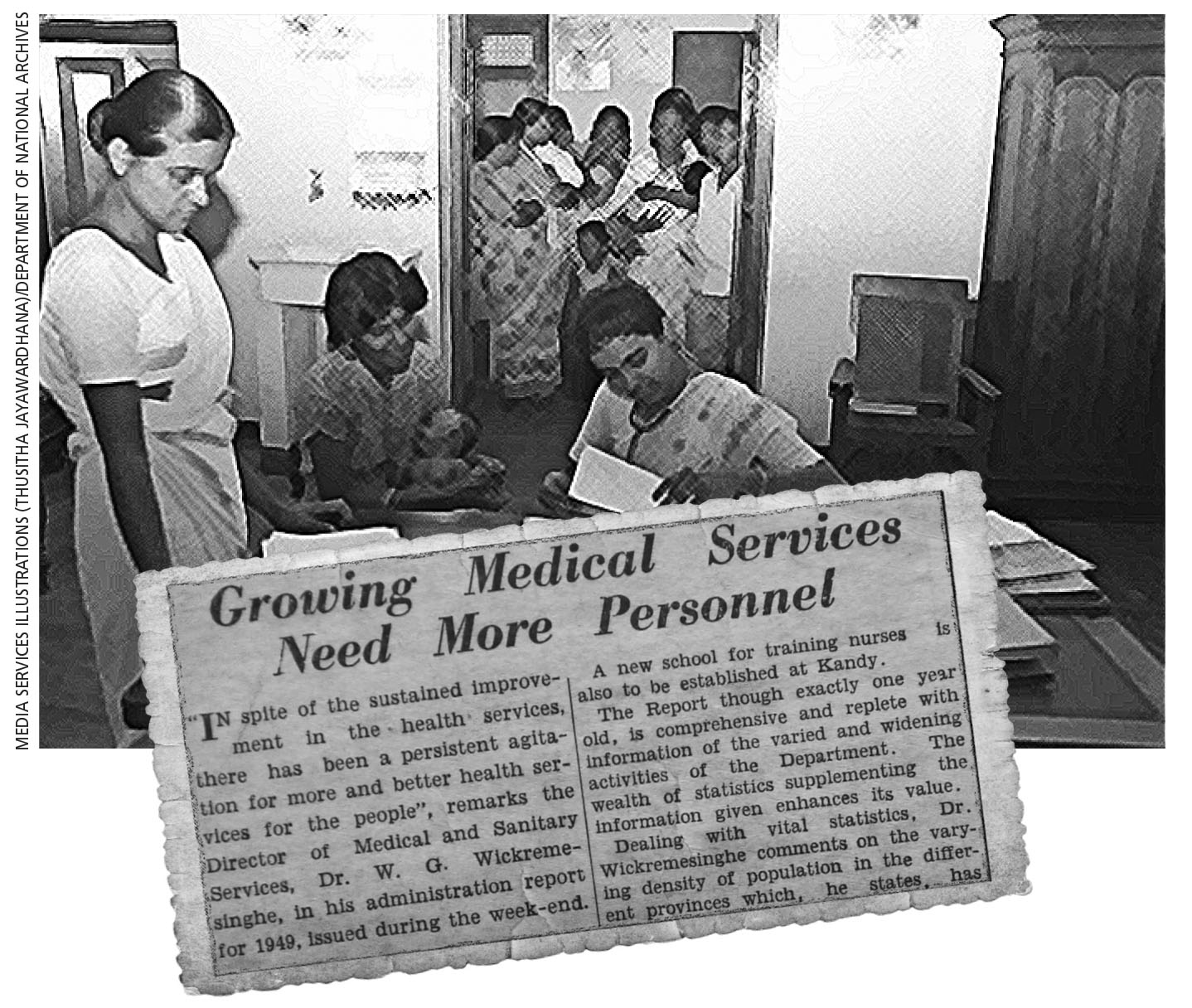1951
Ceylon’s Medical Legacy to its Citizens
The nation adopts free healthcare policies
A nation’s wealth is its people’s health. This truism has been demonstrated time and again – especially in the context of a global pandemic and the fallout for the country from COVID-19.
And it is largely thanks to a policy decision taken a short three years after independence that even today, the world looks with wonder and not a little envy at Sri Lanka’s healthcare services system.
The solid foundation of this edifice was laid in the 19th century when British colonial rule introduced the fundamentals of the Western medical system to Ceylon. A network of hospitals was set up across the island, thanks to missionary and philanthropic enterprises, and its contribution began to make its presence felt when mission hospitals were brought under the canopy of the Civil Medical Department as far back as 1858.
In the 1920s, the health units system – courtesy of the Rockefeller Foundation – consolidated these strong beginnings by bolstering the vigour of preventative healthcare.
Natural and man-made disasters such as the malaria epidemic of 1934/35 served to strengthen the arm of native entities such as the anticolonial Suriya Mal movement, which was instrumental in fighting off this debilitating scourge.
And by the time of Ceylon gaining its independence, these factors had contributed to the flourishing of over 250 public healthcare institutions islandwide.
The ‘free health policy’ implemented for the first time in 1951 was also influenced by its erstwhile parent administration – Britain’s 1946 legislation of its own National Health Service (NHS).
This was the Ceylonese government of the day actioning the state commissioned Cumpston Report of 1950, which set general trends for public healthcare – in particular, the abolition of user fees for the general populace.
It was a policy decision that has since paid rich dividends for Ceylonese and Sri Lankan citizens who have been the beneficiaries of impressive public health indicators – including relatively low infant and maternal mortality rates, as well as the salutary eradication of a plethora of communicable diseases.
Today, this public service enabled by indirect taxation remains free at the point of use, supporting half of outpatient services and 90 per cent of inpatient care.
It was a policy decision that has since paid rich dividends for Ceylonese and Sri Lankan citizens who have been the beneficiaries of impressive public health indicators




